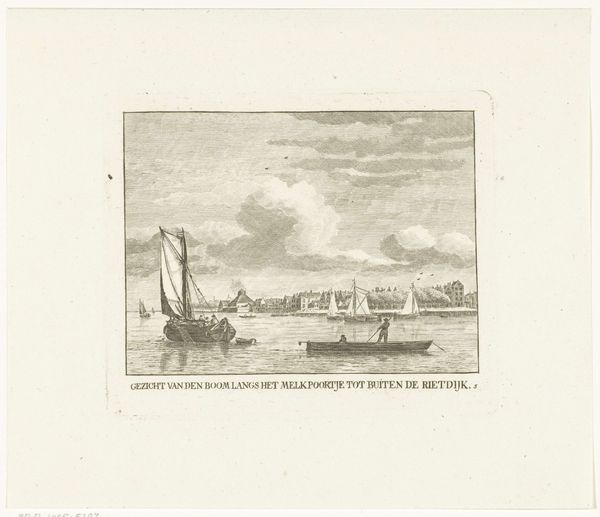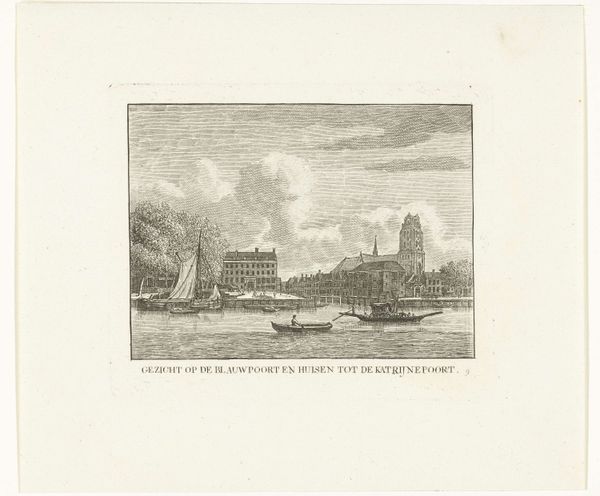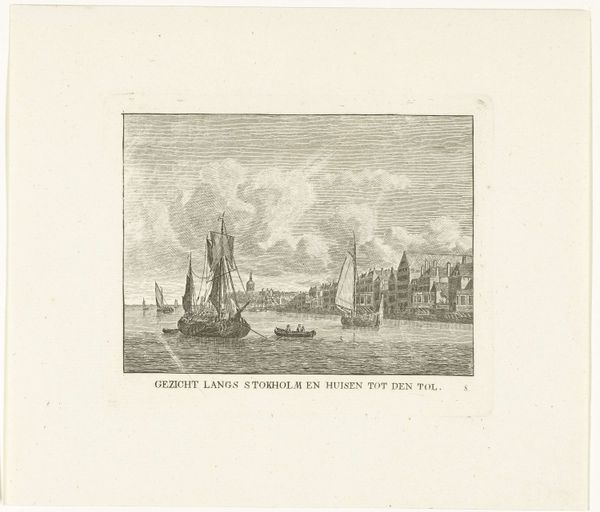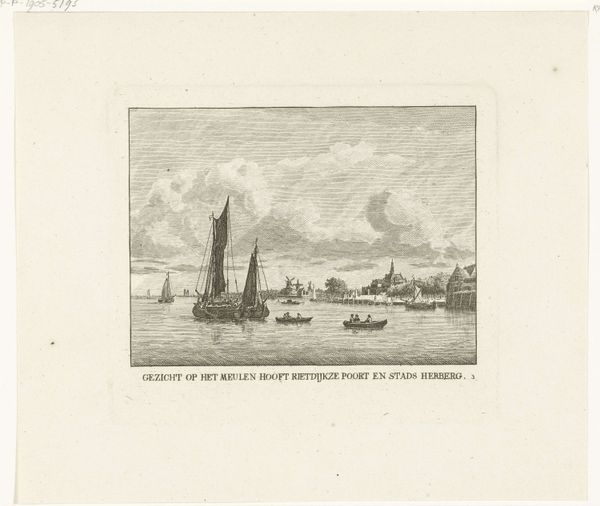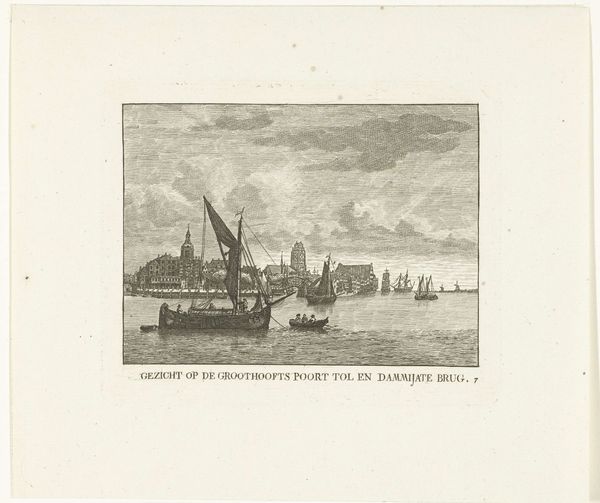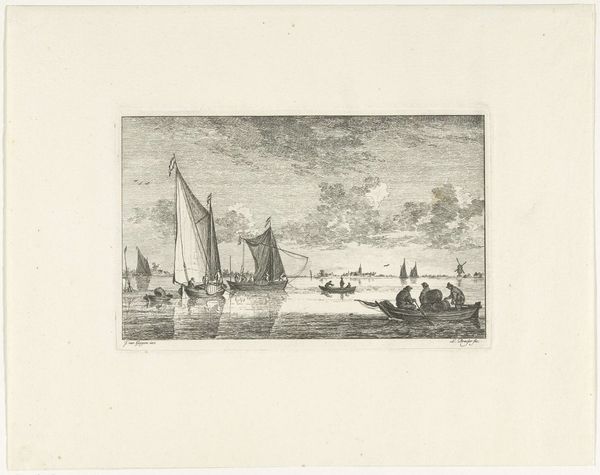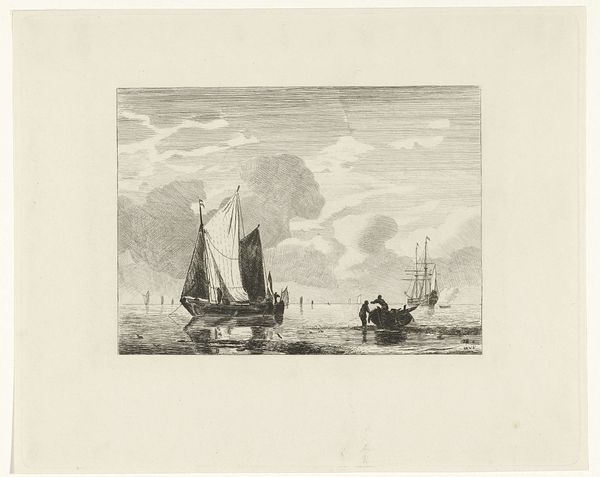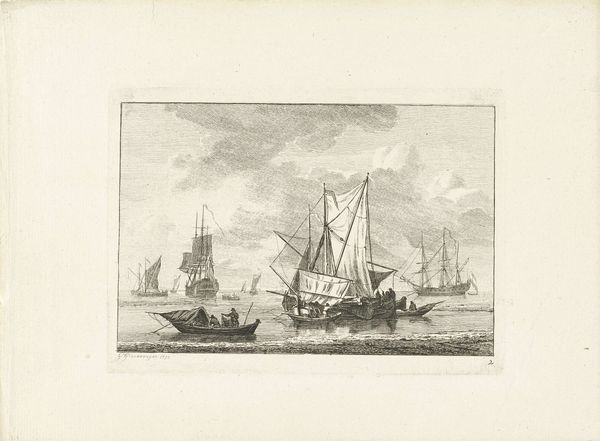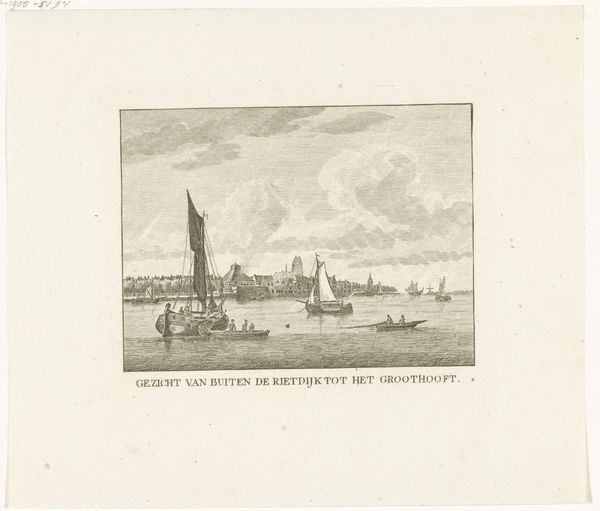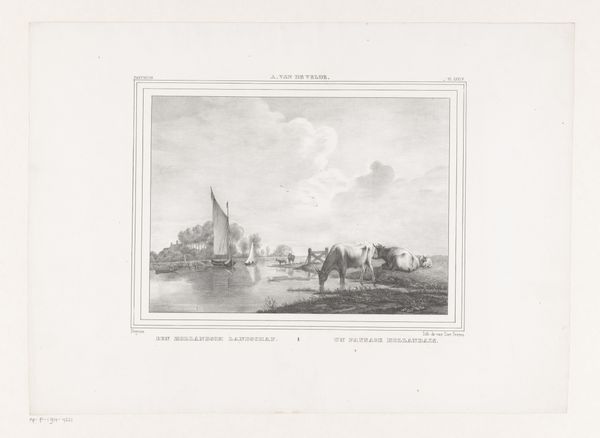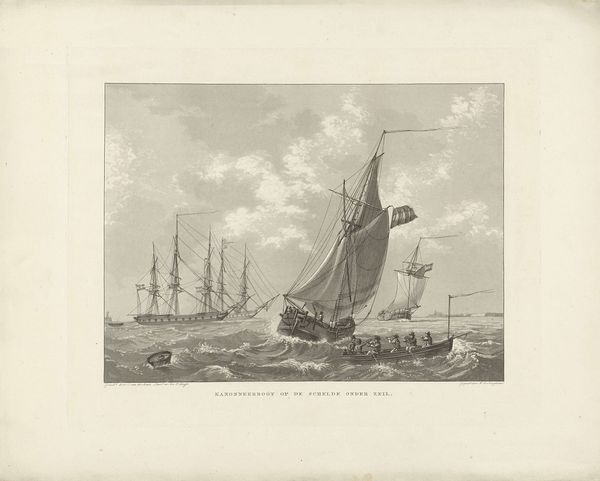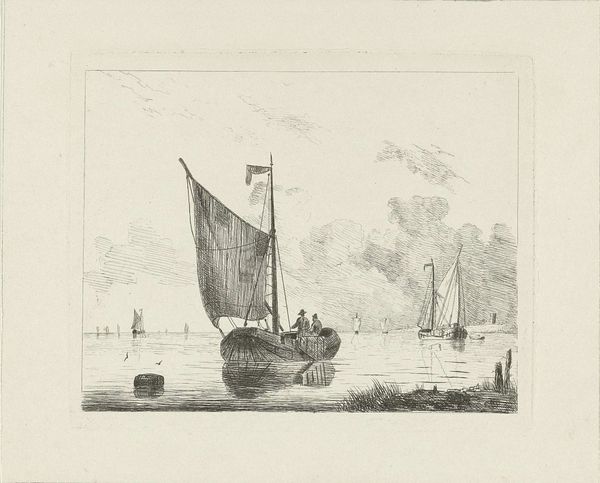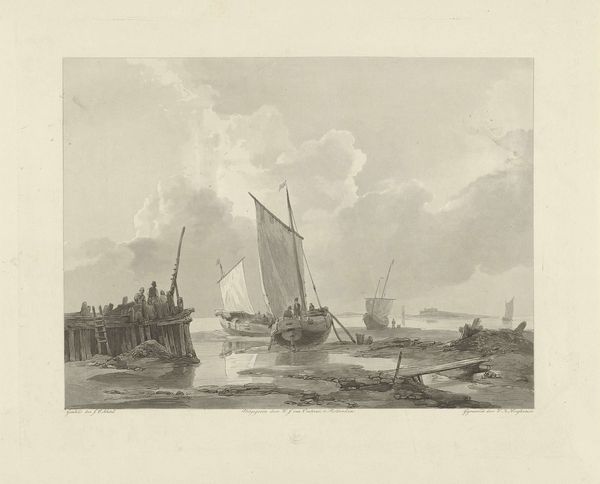
Dimensions: height 118 mm, width 139 mm
Copyright: Rijks Museum: Open Domain
Curator: Welcome. The artwork before us, created in 1803 by Carel Frederik Bendorp, depicts the Vuilpoort and Zakkendragerspoort, using the engraving technique. It resides here at the Rijksmuseum. Editor: It has such a tranquil, almost melancholic feel, doesn't it? The delicate lines give the entire cityscape a muted appearance. The sails especially appear light and ethereal. Curator: Bendorp, in his role as a surveyor, documented the evolving urban landscape. It's crucial to remember the historical importance of waterways in urban life. The doors provided more than entry to goods and people, it controlled traffic and helped collect taxes in growing population centers. The image demonstrates a vision of the time. Editor: Visually, the composition intrigues me. There’s a careful balance in how the shapes of the boat, the figures within the small boat in the foreground, the church, and even the clouds contribute to a sense of depth. And while the lines may be simple, it's still an idyllic composition. Curator: We must consider this image not only for its immediate visual appeal, but in relationship to civic and cultural circumstances of the Netherlands in that period. Think about how it connects the water traffic and cityscape, as well as the political issues tied to waterways. These controlled not only passage but, just as significantly, economic opportunities. Editor: Indeed, there's a captivating dialogue between precision and romanticism in this engraving. Bendorp captured the scene, while also giving us this contemplative aesthetic using linear construction. Curator: Indeed, a crucial contribution, showcasing the interaction between the city, its citizens, and the political circumstances. Editor: Ultimately, what strikes me is that Bendorp was able to capture the quiet pulse of the city. Curator: Yes, through historical record as well as aesthetics of a cityscape. A balance worth keeping in mind when considering urban centers in the history of Dutch art.
Comments
No comments
Be the first to comment and join the conversation on the ultimate creative platform.
